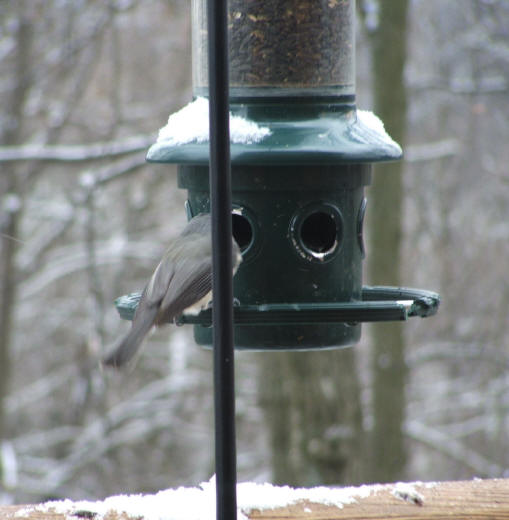The ancient Mayan calendar recently drew to an end, and we came to understand that this really meant a whole new cycle would begin. A gardener experiences the years in a cyclical way, in many respects – moving through seasons of planting, growing and planning. As 2013 begins, we can look back at how things were at this point in winters past. A review of past columns
from Master Gardeners gives us some great pointers on actively engaging with our gardens in the winter, and on the more passive garden-related activities that can occupy us while huddled indoors over a hot cup of tea.

Pat Ferguson once advised us, in "Colors of a Winter Garden," that we can appreciate texture and color at this time of year. She said, "There are hundreds and hundreds of evergreen shrubs to plant for year-round interest with color choices of varying shades of green, blue, blue-green and so forth. Truly, there is a stunning array of colors, shapes, and sizes out
there!" Pat pointed to hollies as a versatile plant with dark green foliage and colorful berries. She also gave consideration to other evergreen plants such as azaleas, and to the textural interest offered by ornamental grasses. "In winter, they are well known for both their graceful shapes and their dried plumes." Pat also noted that trees with peeling or multi-colored
bark add interest to the winter landscape, such as river birch, Chinese elm or paperbark maple. "Finally," she concludes, "place your winter-interest plants where you can appreciate them both coming and going from your home and from within."
In order to appreciate the colors of winter, we first must plan. At least two Master Gardeners approached the topic of planning during the winter. Linda Knox taught us to work on garden design in the comfort of our living rooms, advising us to draw out the perfect garden. She said, "You may be convinced that you need a design on paper. There is help on the internet.
Try searching under garden or landscape design. There are also kits on the market to help map out an entire yard. Even without these aids, however, you could begin by simply charting those bulbs you planted before winter set in; then complete your map by locating each plant as you recall or see its place in the garden. To enhance the visual effect, go one step farther and
categorize spring, summer and fall bloomers. Creating plastic sheets for each season that overlay each other can facilitate forming an overall view of the entire area. A winter sheet with shrubbery and trees would provide background for all other pages."
Shirley Lindsey elaborated on the topic of planning, citing winter as the perfect season to envision "garden structures." These are the elements of the garden that don’t grow there. Shirley told us, "This is the best time for making plans as well as viewing your landscape and making decisions about what wonderful effects you want to create in your garden next year.
When the leaves fall and the flowers are gone, you can see the ‘bare bones’ of your garden and imagine just where a nice arbor or water feature might go." She adds that these additions might be natural, such as placing large contrasting rocks, or might be entirely constructed. Arbors, fountains, or even chairs, can "enhance the beauty of the plants themselves." She also
notes that "a man-made fence or a natural hedge of shrubs is often used to screen off areas that are more work-oriented, such as a driveway or the area where you keep the garbage cans or your heat pump."
Another touch of color in the winter garden can come with the presence of birds. In "Feeding the Birds this Winter," Kay Hinkle reminded us how to support the welfare of the feathered creatures who remain during the cold months. "Once snow covers the ground," she writes, "natural seeds are covered and berries and crab apples are gone. The food you provide for the birds
that inhabit your area is important to the bird’s ability to maintain their 108 degree body temperature necessary for survival." We can provide fatty foods such as suet or peanut butter. She also advises, "If you buy a pre-mixed bag of seeds, look for those high in sunflower seeds and white proso millet. Avoid those containing fillers like wheat seeds and milo." Even the
bird-feeding area is best planned for, "selecting an area that is 5-10 feet away from a bush or tree to provide cover from prey", and considering water supply.
As another winter cycle passes, we can look forward to the seasons to come, without losing sight of the pleasures available to us in the winter garden and the activities that surround it.
Read other winter related gardening articles